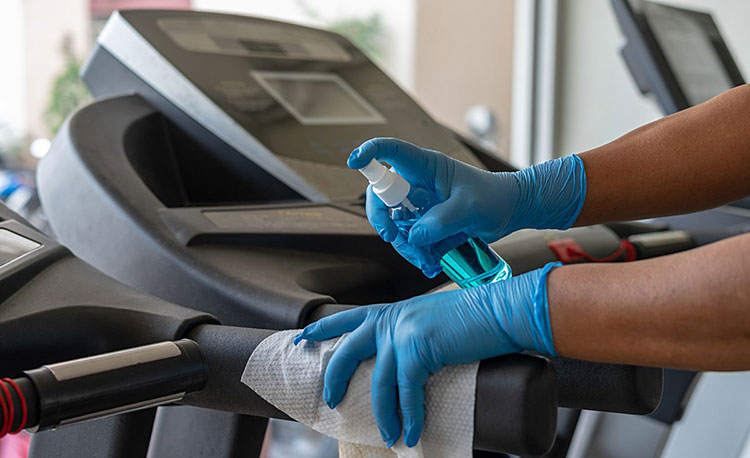By Richard Carmona
Editor’s Note: This column is being reprinted from CalMatters, a nonprofit nonpartisan newsroom committed to explaining California policy and politics.
•••
As Gov. Gavin Newsom lifts the state’s stay-at-home orders, considerable focus is being placed on which businesses can safely reopen. While staying home is the safest way to mitigate risk, keeping people in their homes is difficult and can ultimately be deleterious to physical and mental health.

Exercise, however, has been shown to dramatically improve both physical and mental health outcomes, but for many, the only safe place to work out is a fitness center.
In California where open-air workouts could resume soon, the closure of indoor fitness centers has come under scrutiny. Contract tracing data from New York State shows that fitness centers are not major spreaders of the virus, accounting for just 0.06% of community spread in states where they are open — lower than retail stores, construction sites, salons and auto dealerships.
As U.S. Surgeon General, I coordinated with states to create a uniform national policy for health. Today, we have some state leaders, including New York’s Gov. Andrew Cuomo and New Mexico’s Gov. Lujan Grisham, who, understanding the low-risk associated with gyms, have reopened fitness centers with appropriate public health measures in place.
Meanwhile in California, leaders have encouraged citizens to “get outside,” or “take a walk on the beach” for exercise. Newsom tweeted recently that “mental health is physical health,” and “staying active & connected right now is so important.”
While this is good advice, public health policy cannot ignore that many Californians simply cannot effectively exercise in their homes or outdoors due to poor air quality, lack of recreational spaces, or an inability to purchase and maintain at-home fitness equipment and subscriptions.
Additionally, many people have already tailored their own exercise regimen to get the best results working out at a well-equipped fitness facility.
To find a solution, large fitness facilities have come together to devise a reopening plan that follows CDC and other public health recommendations.
The California Safe Fitness Plan, if implemented, would represent the most stringent requirements in the country, while still providing critical access for fitness. The plan calls for limited capacity, increased physical distancing of 12 feet — double the national 6-foot standard — mandated face coverings and a record of every person who enters a fitness facility for contact tracing.
In addition, the plan would require sanitization of equipment every 20 minutes during operating hours, overnight closure from 10 p.m. to 5 a.m. to sanitize all surfaces and equipment, and closing all communal locker rooms and showers while a region is in the “Purple Tier.”
Perhaps most importantly, large fitness facilities allow for greater airflow and robust air circulation systems, and under the California Plan, fitness centers would be required to use a minimum MERV-13 air filtration standard.
The closure of indoor fitness centers has caused California’s vulnerable populations — already disproportionately impacted by the pandemic — to struggle even more with their physical and mental health.
I have experienced homelessness, hunger and health disparities during my youth, helping me to understand the importance of ensuring that all populations have access to interventions that help improve overall health outcomes.
COVID-19 has presented serious health care challenges and difficult decisions for policymakers. However, large fitness facilities want to be part of the solution by offering to implement stringent safety protocols that will allow individuals the opportunity to improve their overall physical and mental health while minimizing the risk of COVID transmission.
To read the California Safe Fitness Plan, go to: exerciseisessential4all.com/wp-content/uploads/2021/01/CA_SafeFitnessPlan_2.pdf
•••
Richard Carmona served as the 17th U.S. Surgeon General and currently sits on the Chancellor’s Board of Advisors at UC Davis. He advises fitness centers on ways to mitigate the risk of COVID-19 transmission in their facilities. Email him at rcarmona@email.arizona.edu.
